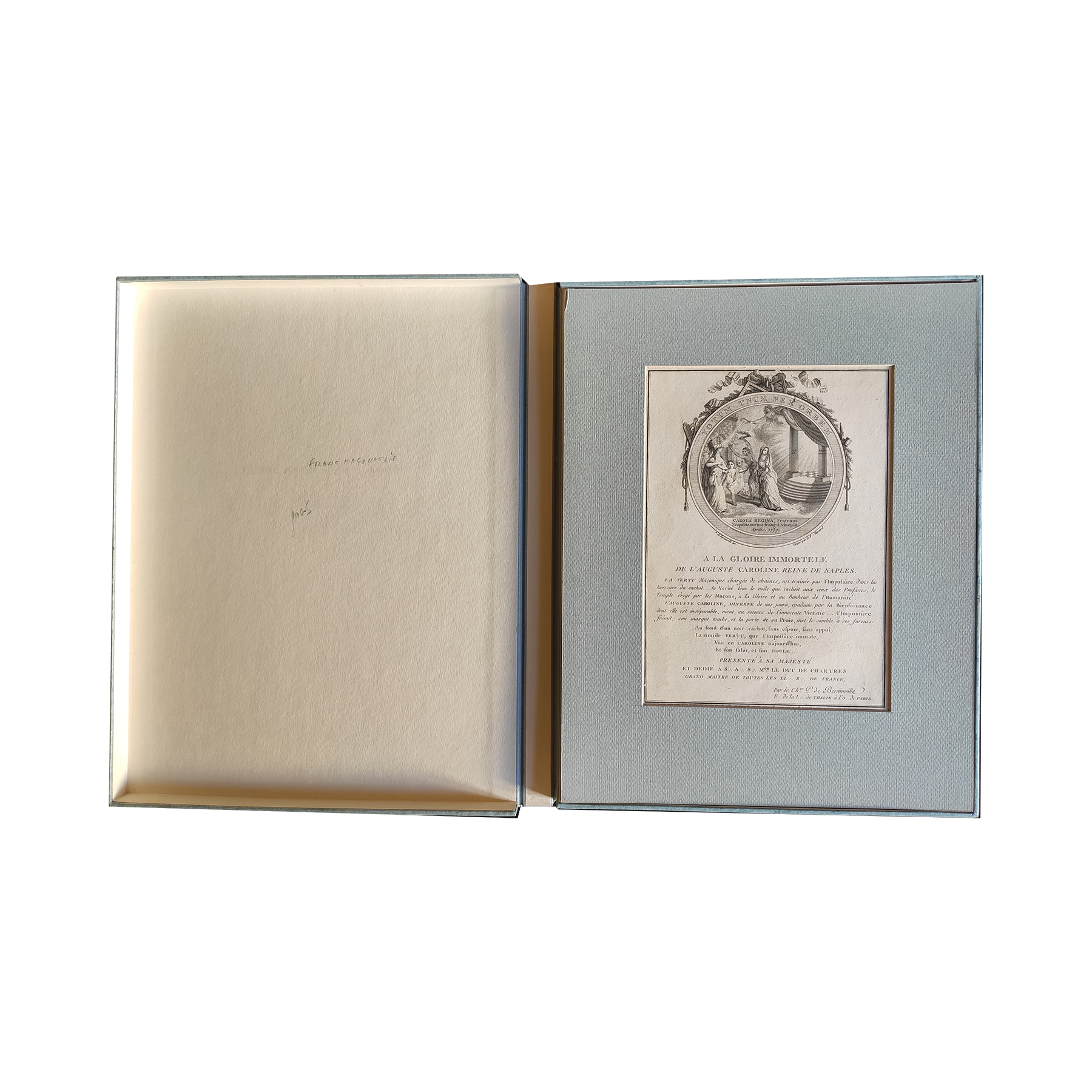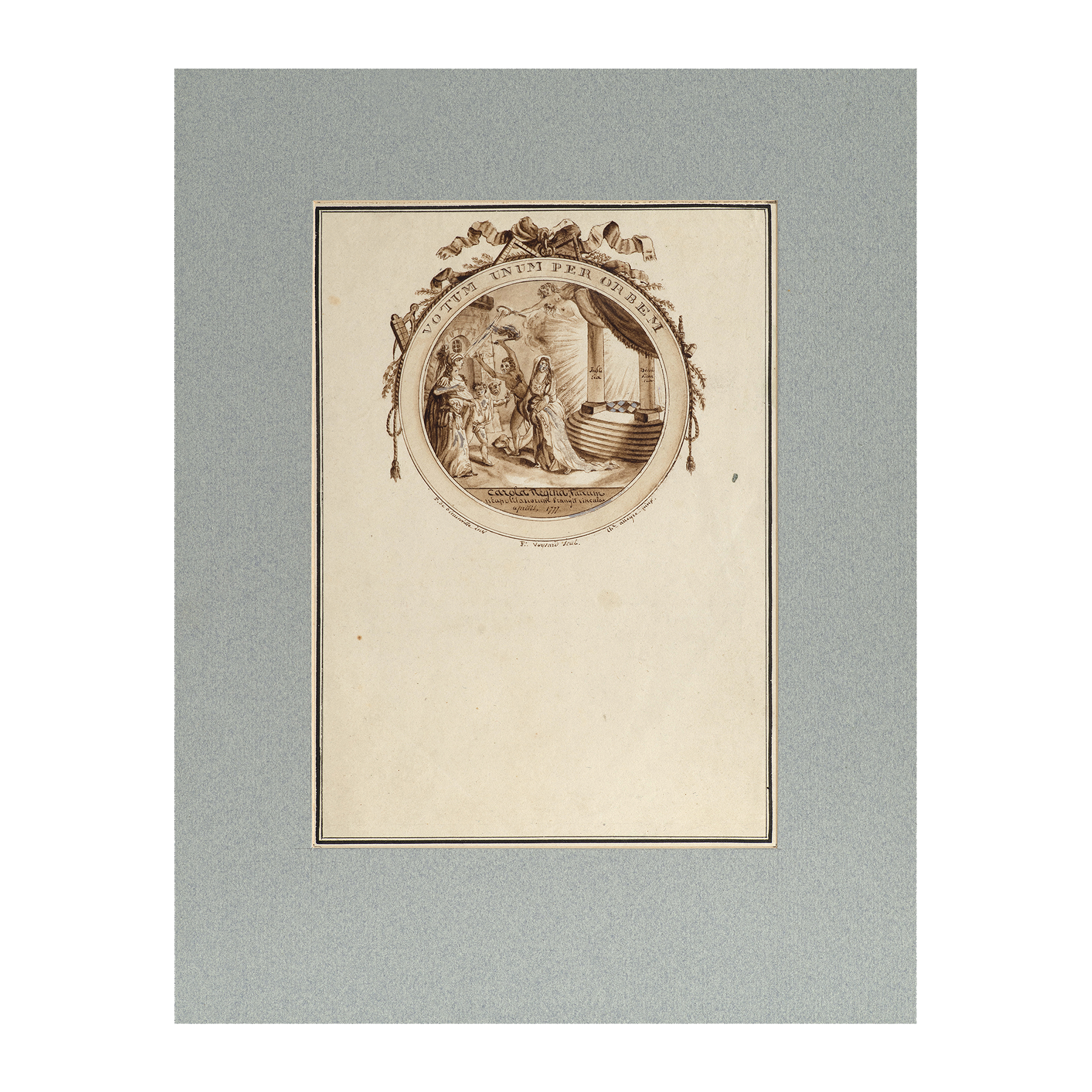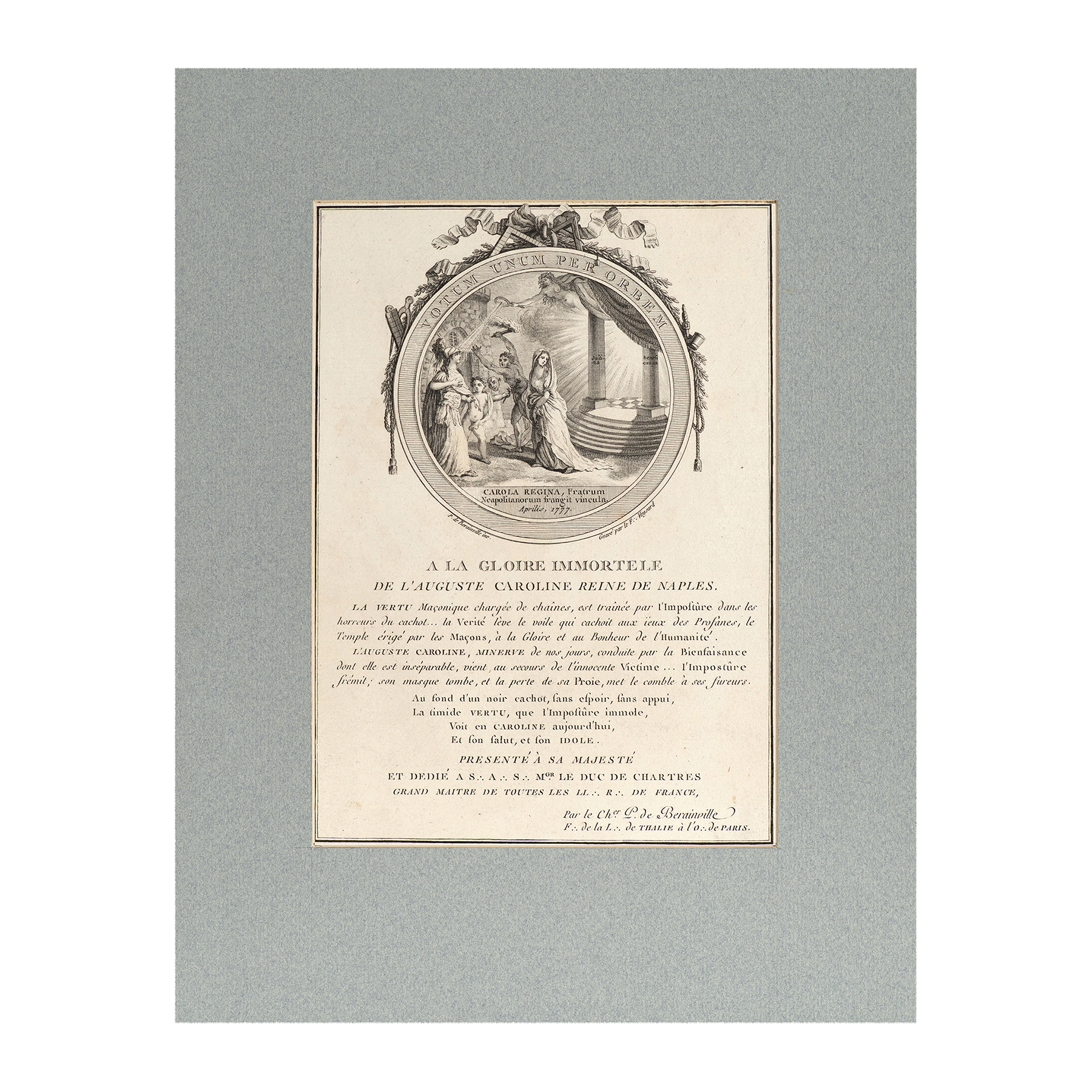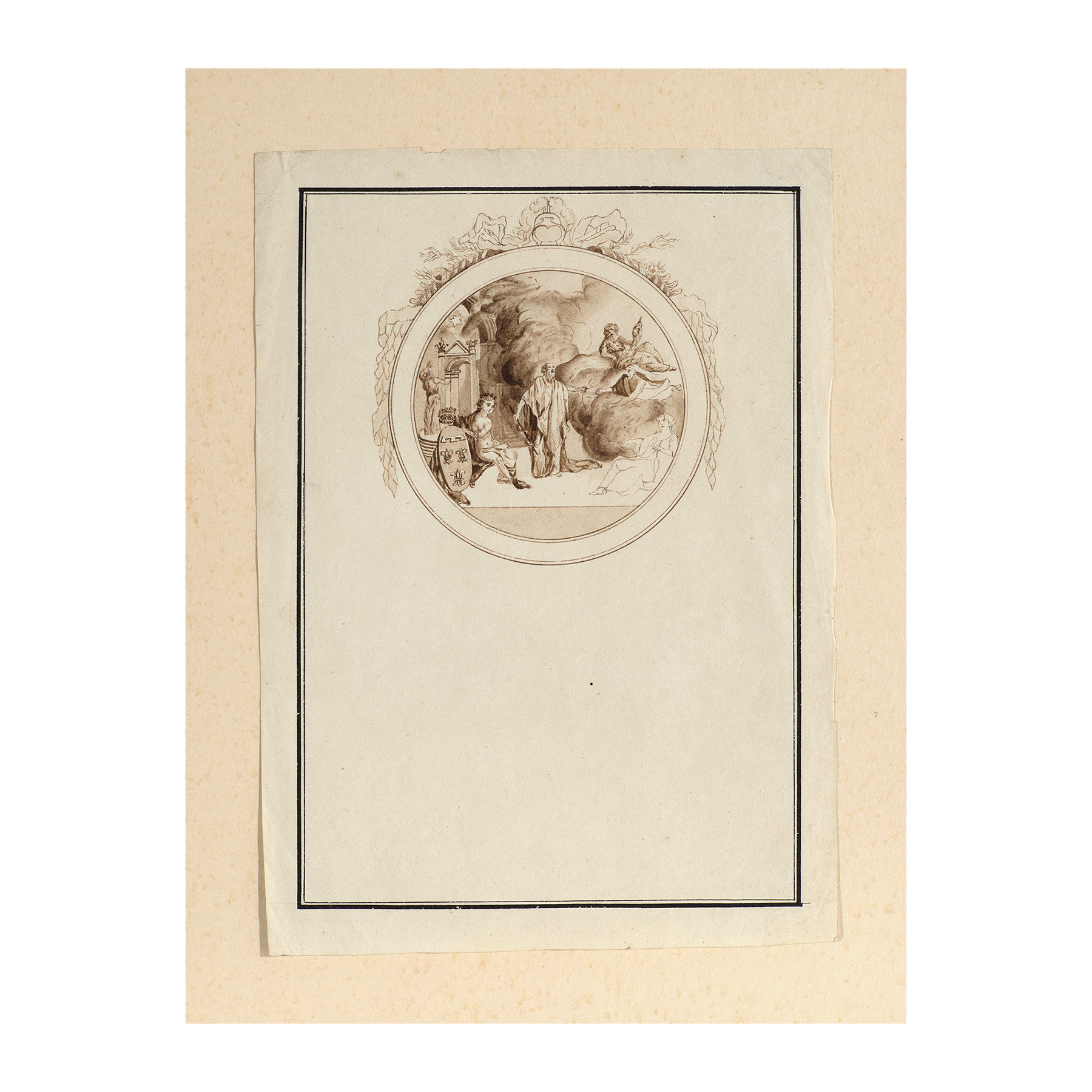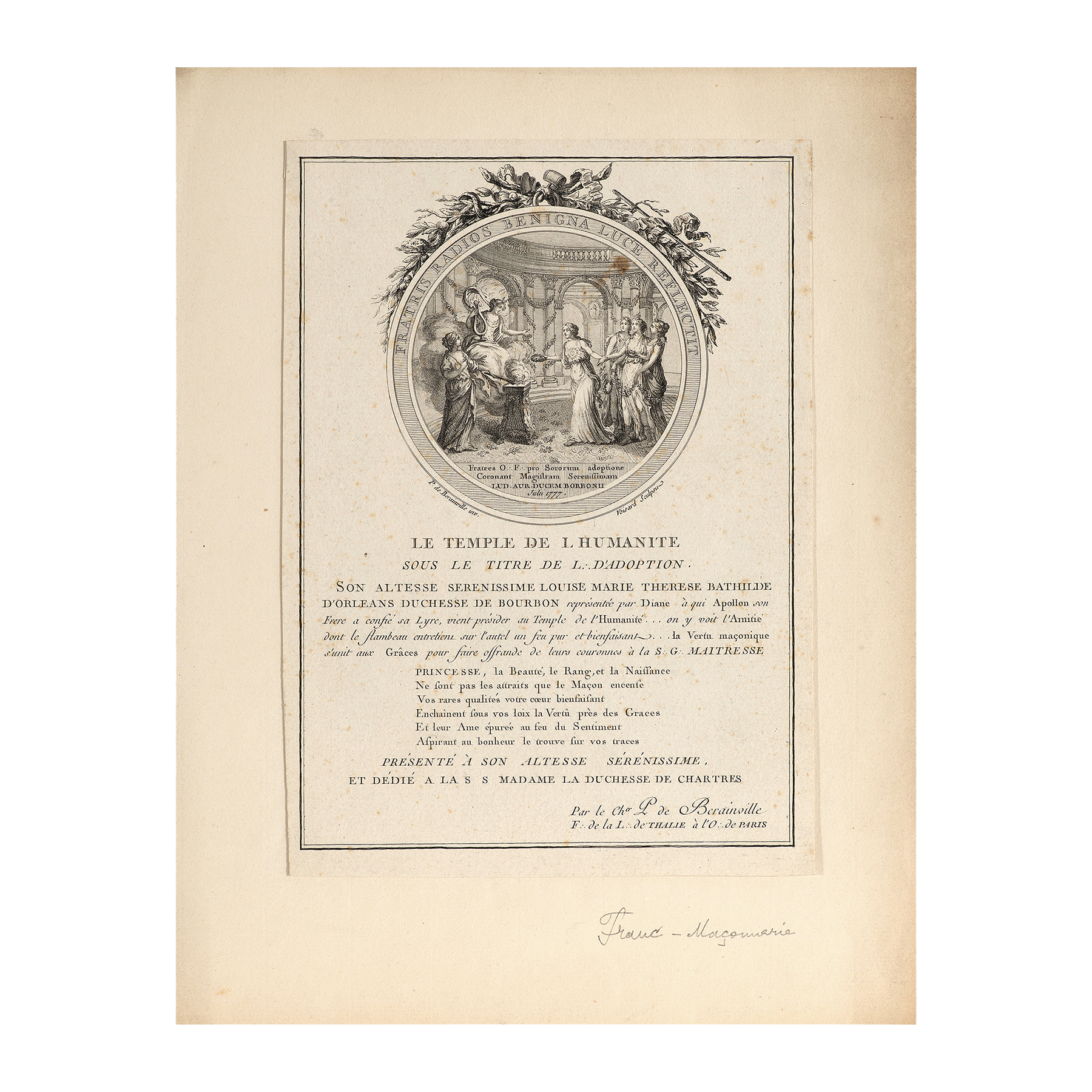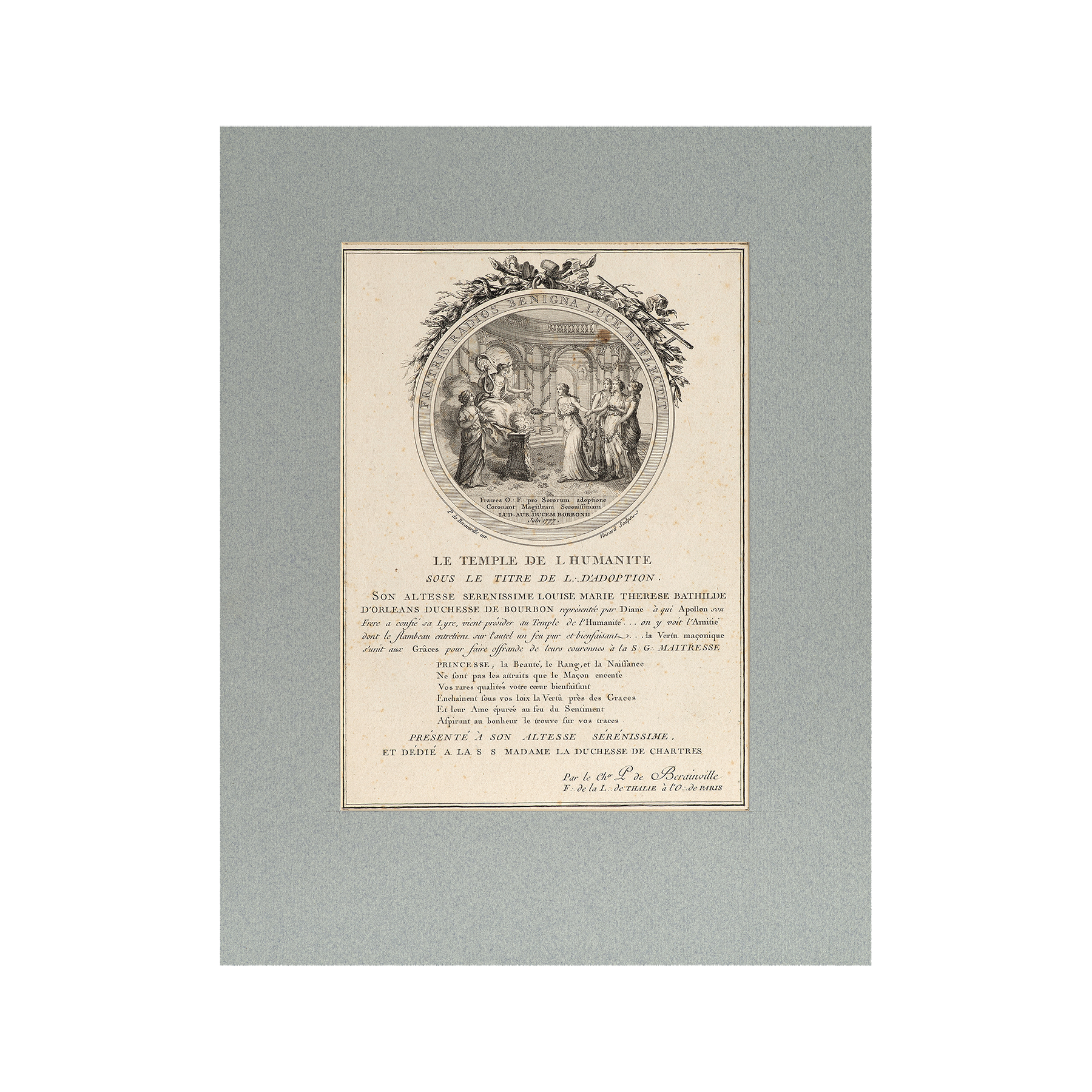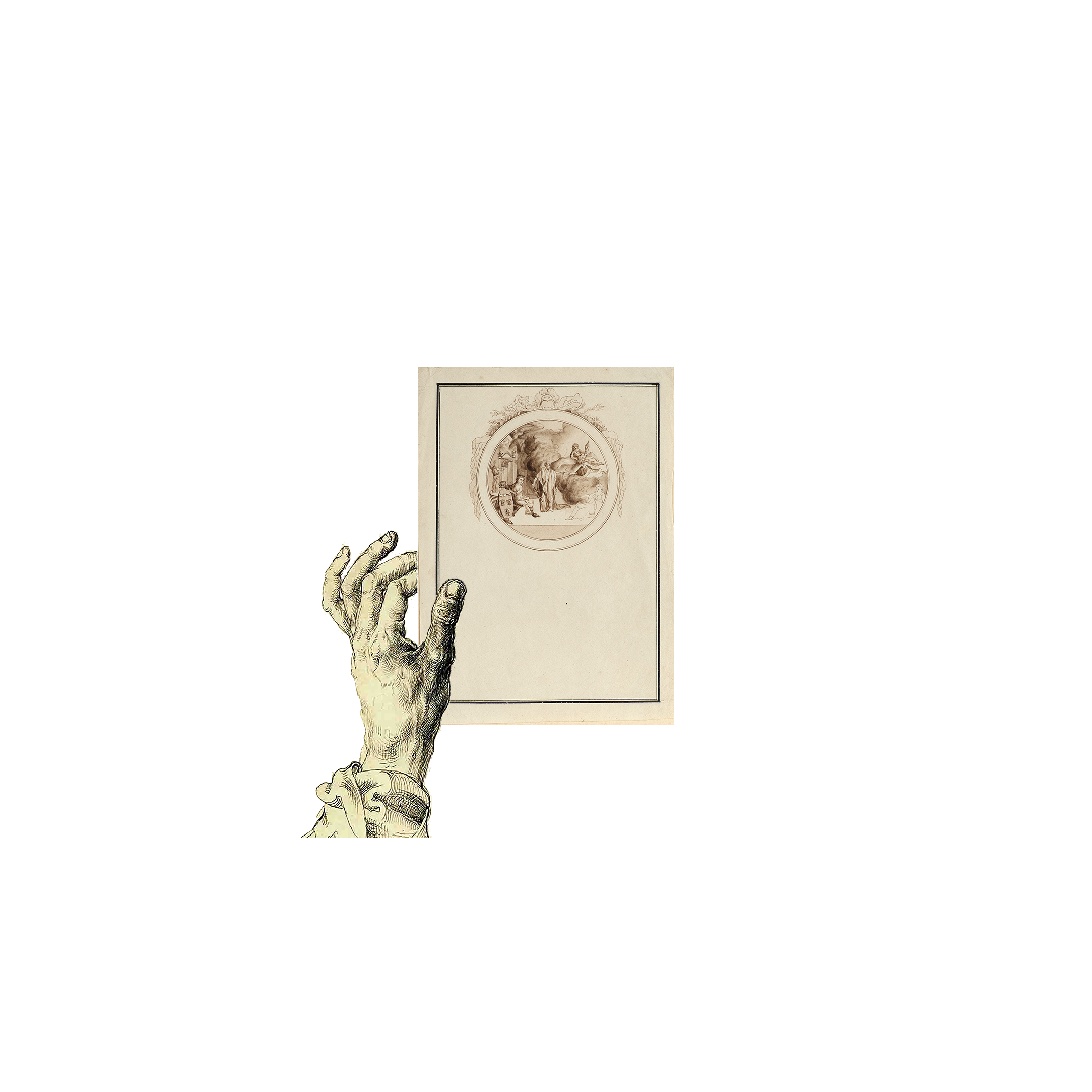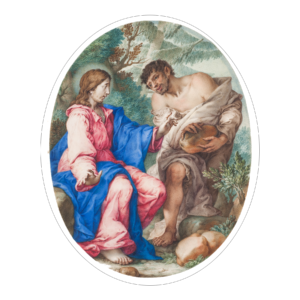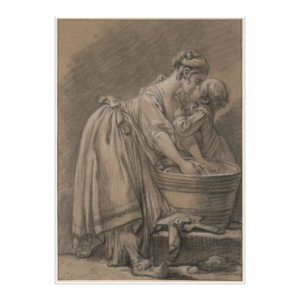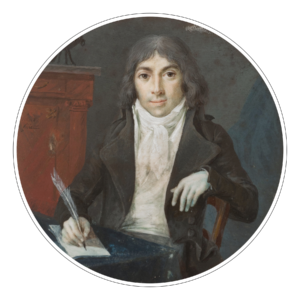Pierre Claude Person dit Person de Bérainville
XVIIIe siècle
- Project for a preparatory medallion: “Votum unum per Orbem” dedicated to the glory of Marie-Caroline of Austria, Queen of Naples.
P
Pen and brown ink with brown wash and white highlights; circular composition on a rectangular sheet framed within a double black line.
Signed, inscribed and dated: “P. de Bérainville inv. /F... Voysard / Ch. Allegre pinx / Carola Regina/Neapolitanorum frangit vincula/Aprilis 1777.”
248 x 178 mm – 9 3/4 x 7 1/64 in.
Bibliography
Louis Petit de Bachaumont, Mémoires secrets pour servir à l’histoire de la république des lettres en France depuis 1762 or Journal d’un observateur (Secret Memoirs to serve the History of the Republic of Letters in France or Diary of an Observer), Volume X, p. 217.
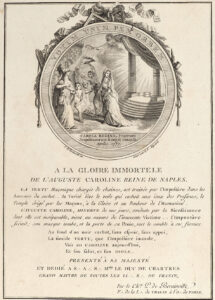
This drawing (of which an engraving has been made) represents the deliverance of the Naples Freemasons through the protection of the queen of the kingdom. The engraving’s text provides the following explanation, “TO THE IMMORTAL GLORY OF THE AUGUST CAROLINE, QUEEN OF NAPLES / Masonic virtue loaded with chains and dragged by Imposture into the horrors of the dungeons…Truth lifts the veil which hid the Temple erected by the Masons to the glory and happiness of humanity, from the eyes of the Profane. THE AUGUSTE CAROLINE, MINERVA, today led by the goodness from which she is inseparable, comes to the aid of the innocent victim…Imposture shudders, its mask falls, and the loss of its Prey brings a climax to its furies / At the bottom of a dungeon, without hope, without support / Timid VIRTUE, which imposture immolates / Sees today in CAROLINE/ and her Salvation, and her IDOL / PRESENTED TO HER MAJESTY AND DEDICATED TO S....A....S... MGR LE DUC DE CHARTRES GRAND MAÎTRE DE TOUTE LES LL... R... DE France Par le Cher P. de Berainville / F... de la L... de THALIE À l’ O... of Paris.”
The drawing illustrates how Marie-Caroline, Queen of Naples, daughter of Emperor Francis I (who was a Mason) and sister of Joseph II, supported the Italian Freemasons and tried to protect them against the prohibition edict issued against the Freemasons by her husband, Ferdinand IV, in 1775. The Queen’s protection was celebrated in several songs and illustrated in various engravings made in her honour.
- Project for a Preparatory Vignette: “Timor unus una Laetitia – illustration dedicated to restoring the health of SAS Mgr le duc de Chartres.
Pen and brown ink with brown wash; circular composition on a rectangular sheet, framed within a double black line.
250 x 178 mm – 9 13/16 x 7 1/64 in.
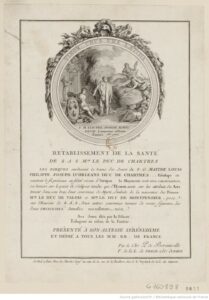
The engraving made after this project held at the BNF,
provides the explanation for the illustration: “RESTORATING THE HEALTH OF S... A... S... MGR LE DUC DE CHARTRES / LES PARQUES weave the weft of the days of S...G... MAITRE LOUIS PHILIPPE JOSEPH D’ORLEANS DUC DE CHARTRES … Aesculapius removes the precious thread from Atropos’ fatal scissors; Masonry watches its light about to slip away with dismay, while Hymen – seated on the attributes of the Arts, holding two crowns of myrtle, symbols of the birth of Princes MGR LE DUC DE VALOIS and MGR LE DUC DE MONTPENSIER in her arms – places two other wreaths woven with roses depicting the two newly born twin PRINCESSES /on S.A.S’s shield.
His days spun by Felicity / Escaping the Scissors of Fate / PRESENTED TO HIS SERENE HIGHNESS AND DEDICATED TO ALL MM... RR... DE FRANCE. By Cher P. de Berainville / ... de la L... de THALIE À l’ O... of Paris.”
In September 1777, the Duc de Chartres became ill. The Freemasons celebrated his convalescence at the église des Cordeliers with a Te Deum set to music, an event reserved for those who could enter with “recognisable signs”. On this occasion, Bérainville takes the opportunity to produce a new vignette project that is not mentioned by Bachaumont.
Bachaumont explains that on August 7th, 1777, the Freemasonry commissioned Bérainville “known for his genius for allegory” to produce an engraved allegory dedicated to the Duc de Chartres, relating to “the brothers of Naples’ adventure and the happy outcome it made.” This is probably the engraved medallion produced by chevalier de Bérainville on September 8th, 1777. Bachaumont comments that, “there is no doubt that this happy attempt will give chevalier de Bérainville the dignity of the medallist in charge of the mottos and inscriptions of the ‘order’.”

Engraving “Le temple de l’Humanité” included.
Former magistrate and special lieutenant of water and forests, Person de Bérainville was also a writer and a member of several learned and Masonic societies. He was the author of many plays, lyrical dramas and comedies, such as La tendresse villageoise (Village Tenderness), performed during celebrations given for the birth of Madame Royale (1778) or L’Épreuve du sentiment or les deux frères (The Trial of Sentiment or The Two Brothers), performed at the Palais-Royal in March 1789. Bérainville was also the inventor of several machines that were exhibited at the Salon du Museum between 1792 and 1799, the operation of which he explains in Recueil de mécanique relatifs à l’agriculture et aux arts (Mechanics Compendium Relating to Agriculture and the Arts) in 1802. Louis Petit de Bachaumont mentions Bérainville several times in his Mémoires secrets pour servir à l’histoire de la république des lettres en France (…) (Secret Memoirs to serve the History of the Republic of Letters in France (…)) and presents him as an amateur courtier who regularly offered or presented verses and drawings: in June 1774, an allegorical medal on the new reign to the Duke of Aumont; in February 1775, a drawing addressing the return of Parliament to M. d’Aligre, “who received it with great honesty, but did not, in his reception, show all the enthusiasm that the circumstances required”; in 1776, an allegorical drawing celebrating the reign of Marie-Thérèse of Austria in gratitude for which she would send him five medals from the imperial cabinet ; and finally, in 1777, a medal presenting the subject of the Queen of Naples protecting the Italian Freemasons.

